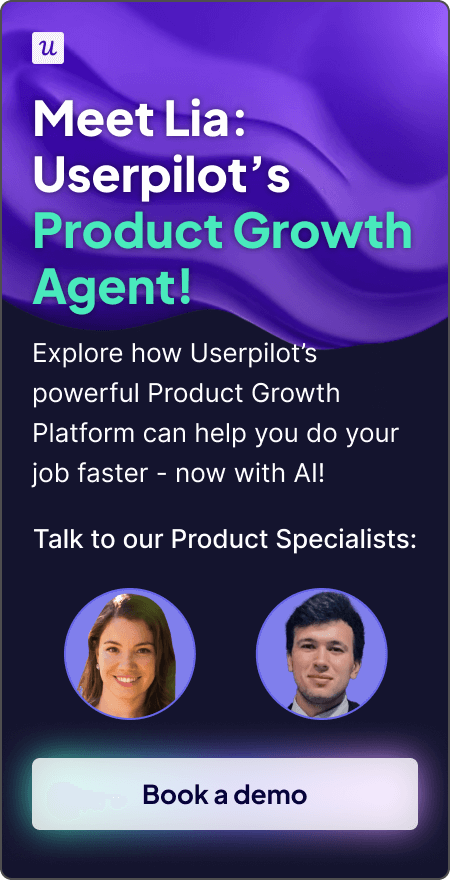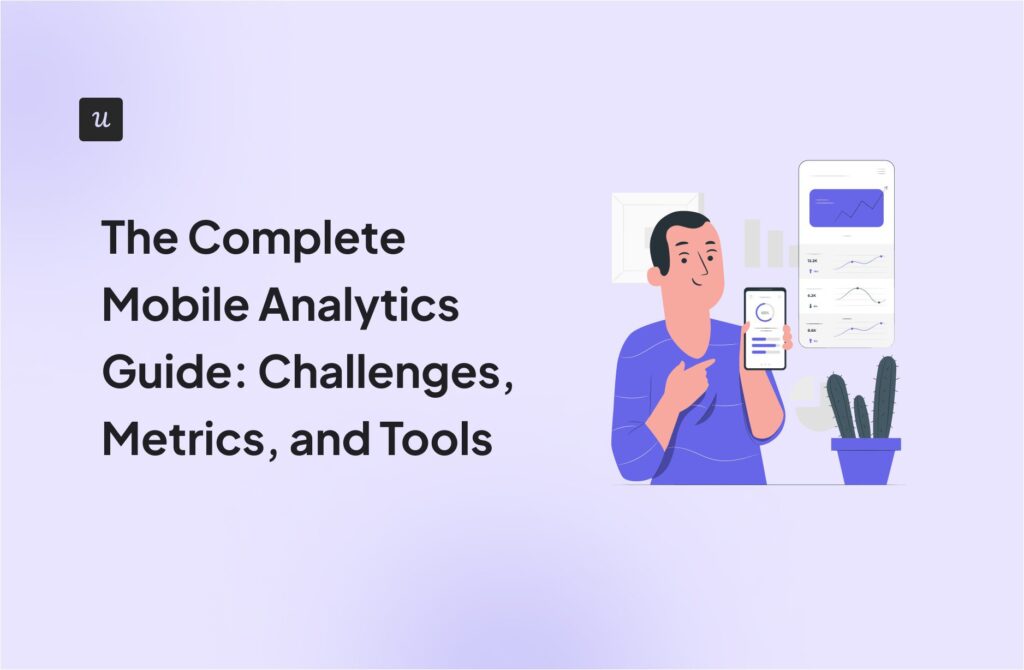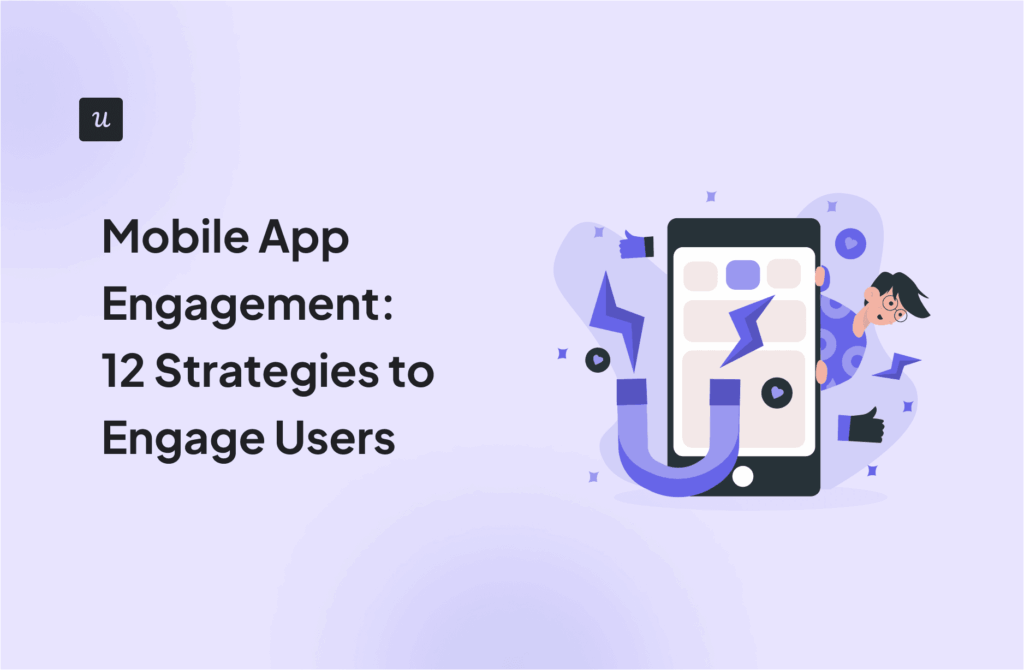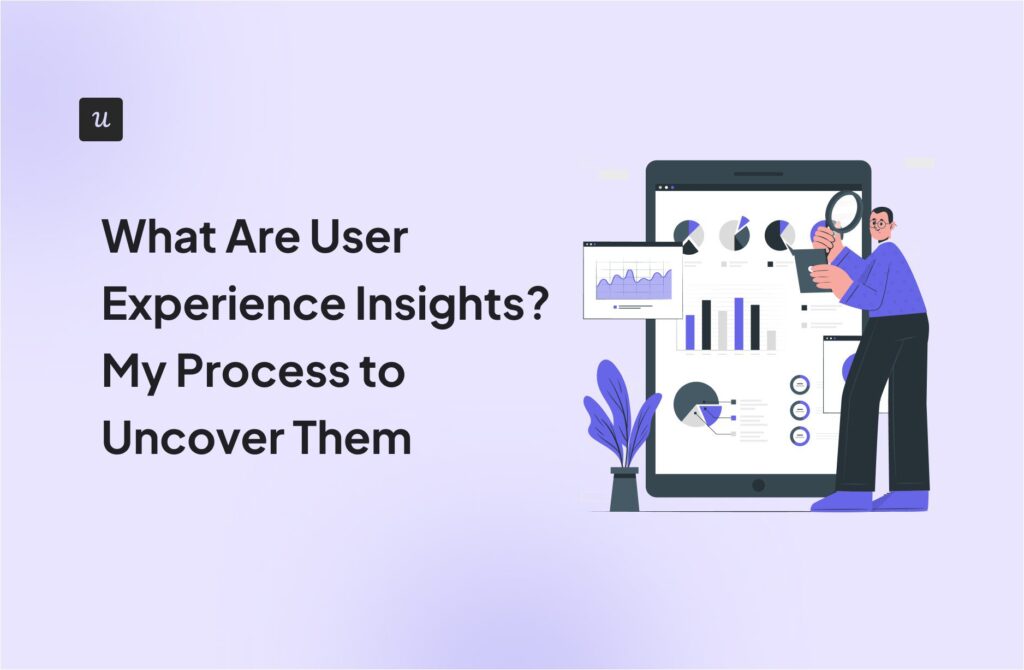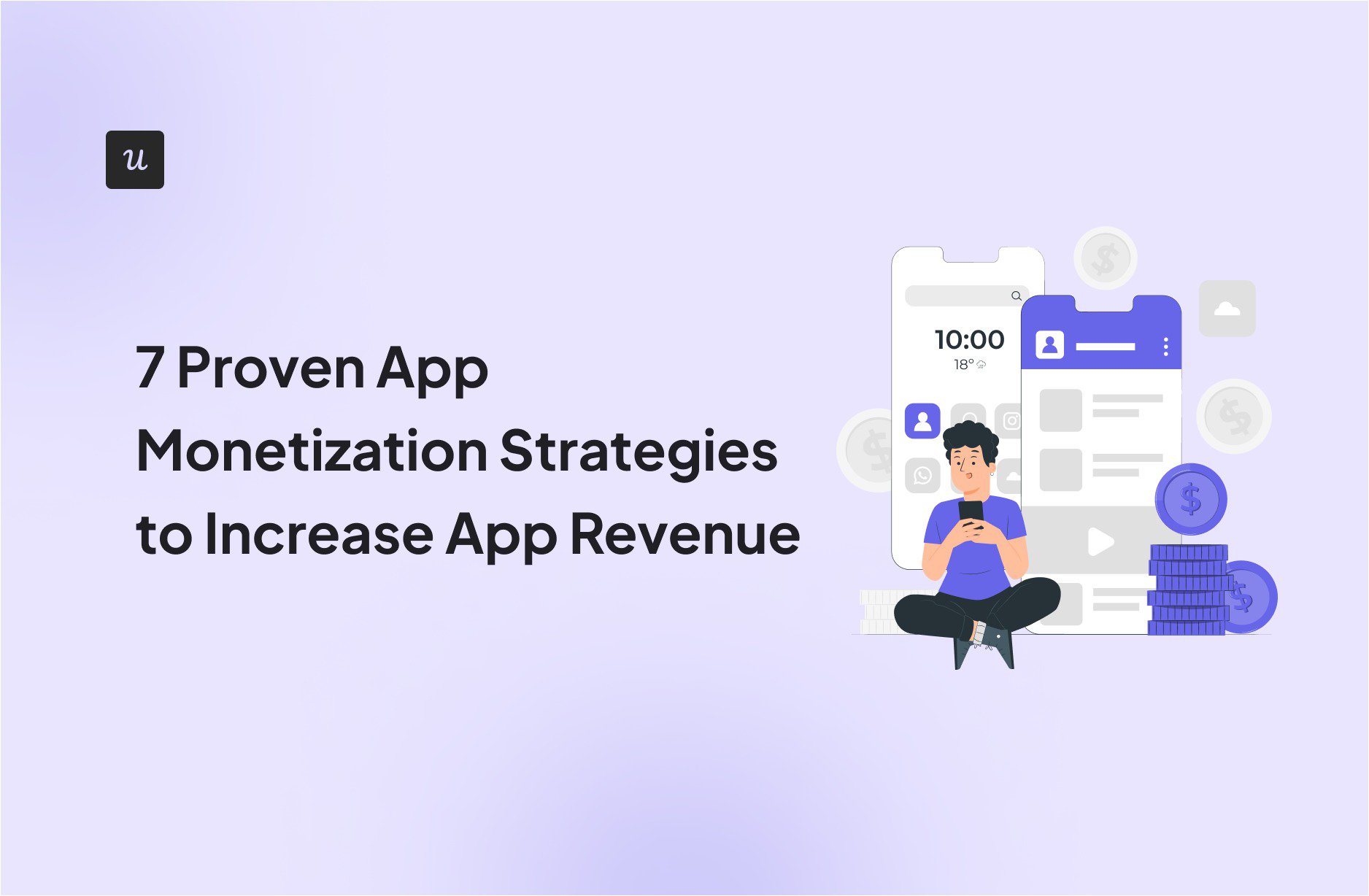
Did you know mobile app users spent an average of $285,000 per minute in 2024? That added to a staggering $150 billion spent on apps in just one year! With the mobile app market growing steadily and projected to surpass $600 billion by 2030, it’s clear that apps are more than just tools. They’re powerful revenue engines.
But here’s the real question: how can you increase app revenue and claim your share?
This article aims to provide a practical guide. We’ll cover:
- Seven time-tested monetization strategies.
- Examples of companies killing it with each strategy.
- How to choose a model that generates reliable revenue and empowers your mobile app users.
Try Userpilot Now
See Why 1,000+ Teams Choose Userpilot
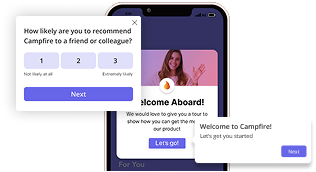
7 Strategies to successfully monetize mobile apps
The right monetization system aligns with your audience and helps you maximize revenue while staying competitive. For some apps, that means blending two or more models. For others, a single, well-executed stream that users trust might be enough.
This section breaks down seven strategies to help you find the best fit. We’ve also added a decision matrix at the end so you can compare options more easily.
1. Display in-app advertisements
What it is: Allow users to use your product (or unlock special rewards) in exchange for interacting with ads.
Why it works: Most users have accepted the trade-off of using apps: pay for the experience or view ads occasionally. And the data backs this up. Mobile ad spend continues to climb year after year, rising in step with smartphone adoption. Since 2020, it has surged by over 60% and shows no signs of slowing down.
In addition, this model has built-in scalability: Keeping the app free with ad support attracts a wide audience, which in turn increases your advertising revenue.
Example: Duolingo displays ads between lessons for free users and offers a paid version to remove them.
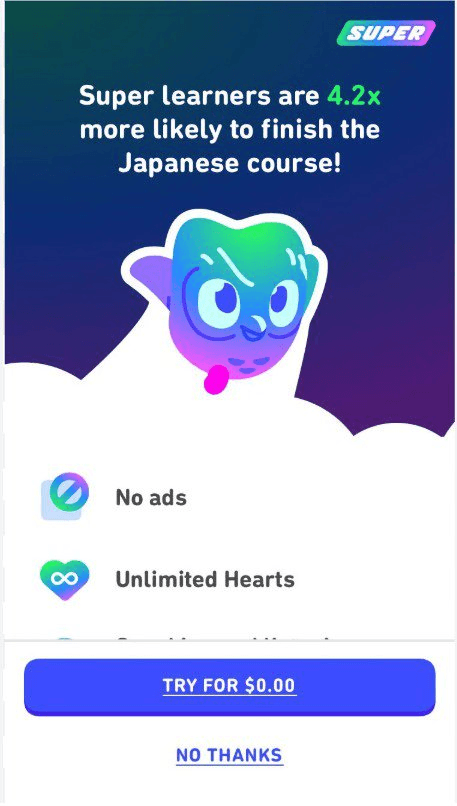
Key considerations: Ads can quickly ruin the user experience if they’re too frequent or disruptive, so it’s essential to experiment with different formats and placements to see what works best for your audience.
It’s also worth noting that most ad platforms pay based on eCPM (effective cost per mille, or cost per thousand impressions), which can range anywhere from $0.07 to $15, depending on the ad format and country. That means you’ll need a high volume of daily active users (DAUs) to generate meaningful and sustainable revenue.
Got high DAUs? Make that traffic count with localized experiences. By speaking the user’s language, you’ll encourage better retention and make them more receptive to region-specific ads, all of which contribute to increased revenue.
This is where Userpilot can help. With advanced segmentation, you can create targeted user groups and deliver AI-driven content localization, like customizing onboarding flows based on a new user’s country:
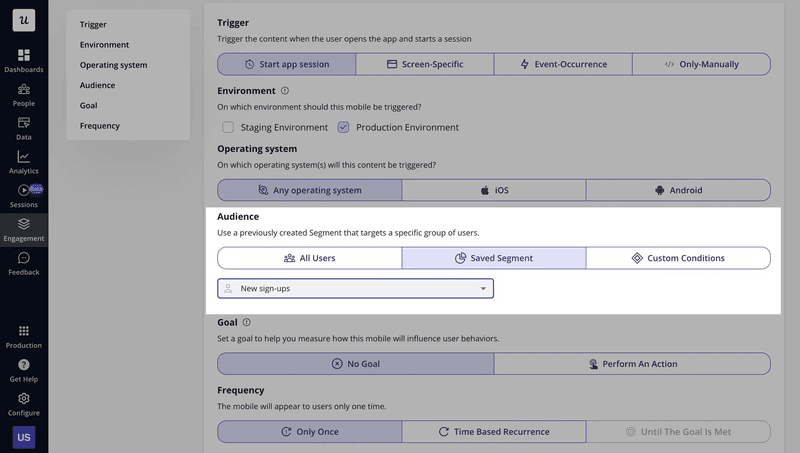
2. Convert free users with freemium upgrades (via IAPs)
What it is: Let users access your app for free, then offer premium features or content as optional in-app purchases.
Why it works: The main advantage here is that you give users control over what they want to spend their money on. From avatars and extra lives in games to advanced features or automation in SaaS apps, the right audience will pay to enhance their experience once they see the value in doing so. However, don’t be surprised if only a small percentage of your users are willing to upgrade. 2024 research by Moloco found that 70%-85% of IAP revenue comes from just 10% of users.
Example: Canva provides a free version with limited functionalities and invites users to upgrade for access to premium features like team collaboration, AI tools, and advanced templates. The platform also allows users to purchase individual templates on a one-off basis.
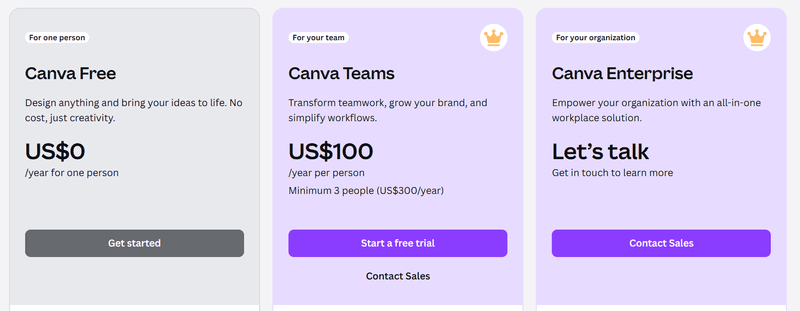
Key considerations: Carefully balance your free and paid features to avoid creating what users might perceive as manipulative or frustrating. Take Canva, for example. It’s free plan includes thousands of templates, basic editing tools, and cloud storage. These features help users get real value, and a premium subscription just feels like a logical next step rather than a forced upgrade.
Also, remember that Apple and Google take a 15%-30% cut on all in-app purchases, so factor that into your revenue projections.
3. Charge users to download the mobile app
What it is: Require users to pay a small one-time fee before they can download your app.
Why it works: Free apps attract anyone, but paid downloads help qualify your audience from the start. Also, these users tend to engage more because they made an upfront financial investment.
Example: This monetization model is more common among B2C productivity and lifestyle applications. A good example is Procreate, an iOS-based digital painting and illustration app that requires users to pay $12.99 per download.
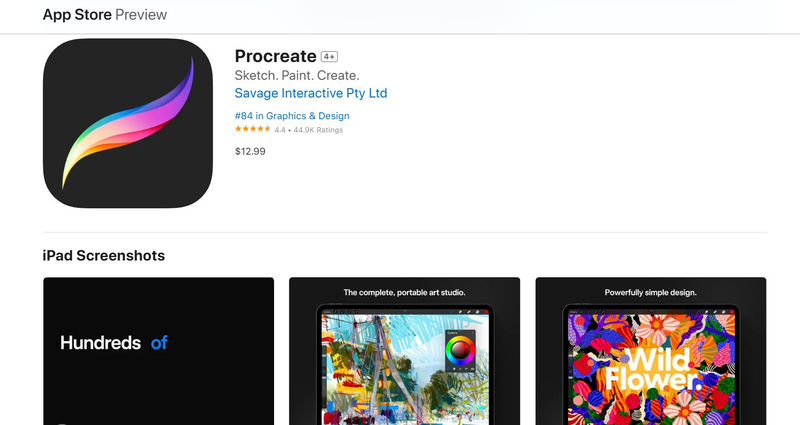
Key considerations: Around 81% of iOS apps and nearly 97% of Android apps are free. That means intense competition if you’re charging users to download your app. To succeed, you’ll need strong marketing, a good brand reputation, and positive user reviews that help build credibility and justify the upfront cost.
4. Build recurring revenue with a subscription model
What it is: Offer ongoing access to your app’s features or content in exchange for a recurring payment.
Why it works: Unlike ad-based models or one-time purchases that can fluctuate, subscriptions provide a consistent revenue stream that allows for better financial planning and investment in future development.
Example: Notion offers several subscription packages tailored to different user needs. The platform also provides a generous 20% discount for users interested in annual subscriptions.
This is a common strategy, and it can be highly effective in driving retention if users see ongoing value in your product. For example, the average one-year retention rate for annual mobile app subscriptions in 2023 was 28%, more than double that of monthly subscriptions (12%). Weekly subscriptions had the lowest one-year retention rates (3.52%).
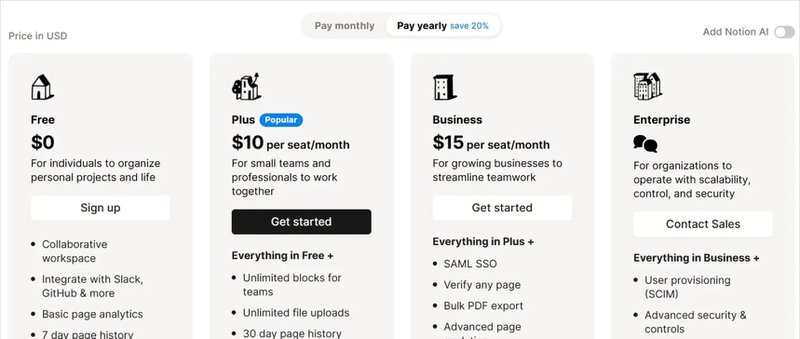
Key considerations: This model only works if users have a frequent need for the app. For instance, users can easily justify paying for a productivity app like Notion because they use it daily or weekly. However, they might struggle to pay for one-time-use tools like a resume builder or a document scanner.
So, how do you know if users will happily subscribe to your product, and which parts of the experience push them toward upgrading?
The key is to understand their in-app behaviors. Use an analytics tool like Userpilot to track how users move through your subscription funnel and leverage the insights to continually optimize your offerings.
For example, if your funnel shows that users who engage with a specific feature within the first three days are 3x more likely to subscribe, that’s a clear signal. You can then design onboarding flows or in-app messages to guide more users toward that feature earlier in their journey.
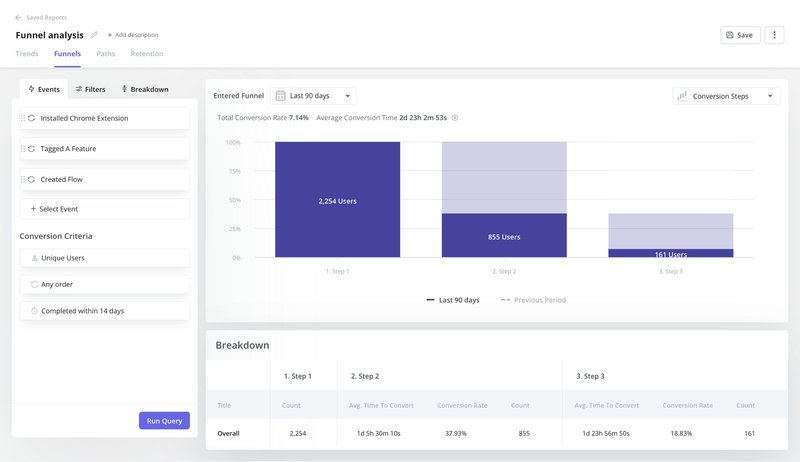
5. Earn commissions with affiliate links
What it is: Recommend third-party products or services inside your app, and earn a commission whenever users purchase through your affiliate links.
Why it works: This model is a great way to create passive income if your app naturally recommends products or services. You’re also adding value to users, especially when the recommendations are timely, relevant, and save them the effort of searching elsewhere.
Example: This monetization model often performs better with review, recommendation, and utility apps. A popular example is Booking.com, which partners with airlines and hotels to earn affiliate income when users book through its in-app links.
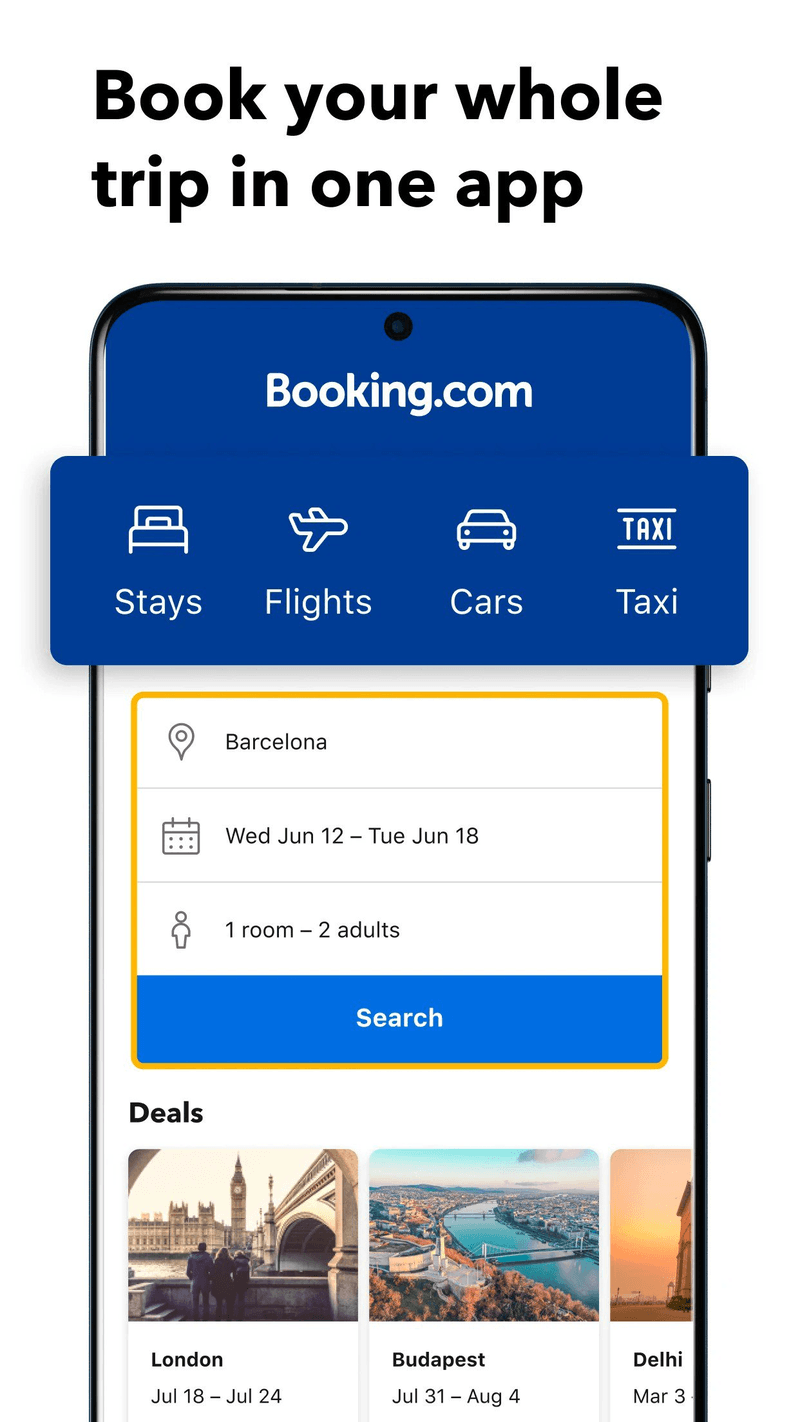
Key considerations: As mentioned, this model is more common with B2C apps that revolve around product or service discovery. However, B2B and SaaS products can also leverage affiliate marketing, though typically in a slightly different way.
Instead of promoting third-party products, you can create your own affiliate program that rewards users or partners for referring others to your app. A good example is Freshworks’ affiliate program, which offers a 15% commission on all subscription revenue generated from referred customers within 12 months.
6. Offer exclusive features via paywalls (feature gating)
What it is: Selectively restricting access to certain features or functionalities within your app. This access is usually controlled based on specific criteria, such as the user’s plan, subscription tier, or even their behavior patterns.
Why it works: Feature gating lets you monetize power users who need advanced features without alienating casual users. In other words, you’re generating revenue while gradually preparing free users to upgrade as they experience more value.
Example: Calm is a classic example. The meditation app is valued at over $2 billion and has been downloaded more than 100 million times. Its monetization model? New users have limited access to the app’s content. Most of its sleep stories, meditations, and soundscapes are locked behind a paywall.
New users have two upgrade options: Pay a one-time fee or subscribe to the monthly/annual plan.
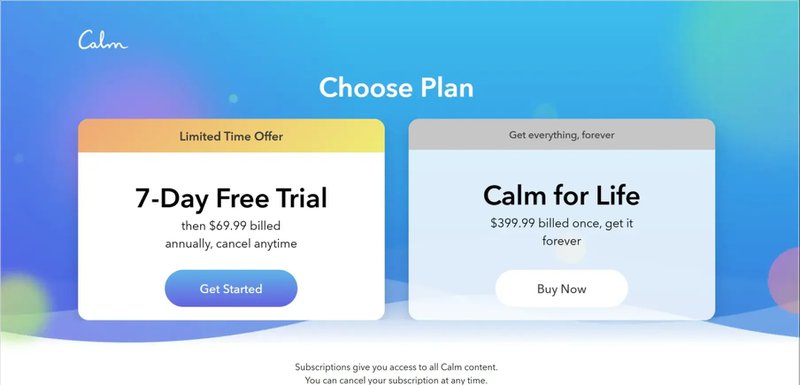
Key considerations: Clearly communicate what content or features are free vs. paid so users understand the value of upgrading.
Make this an ongoing process rather than a one-off communication. For example, automatically trigger upgrade prompts each time users hit a paywall. Like the Calm example below, you could even offer occasional discounts to encourage purchases:
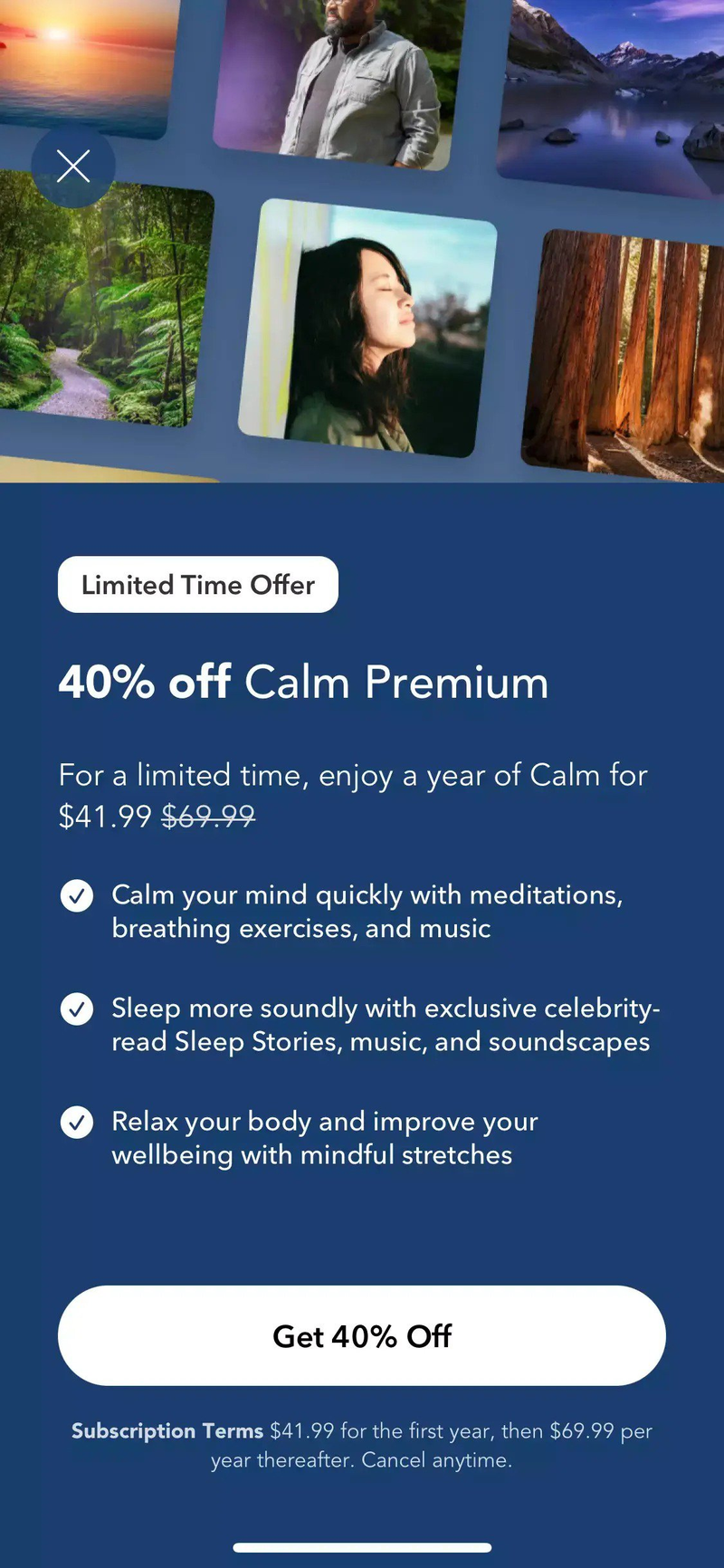
Get your in-app messaging right with Userpilot
Delivering the perfect in-app message at the right moment is easier said than done. It requires a deep understanding of user behavior, precise timing, the right wording, and seamless integration into the user experience.
Userpilot can help. Our platform works across any type of app and equips you with code-free tools like an AI assistant, UI patterns, A/B testing, and content localization to communicate effectively.
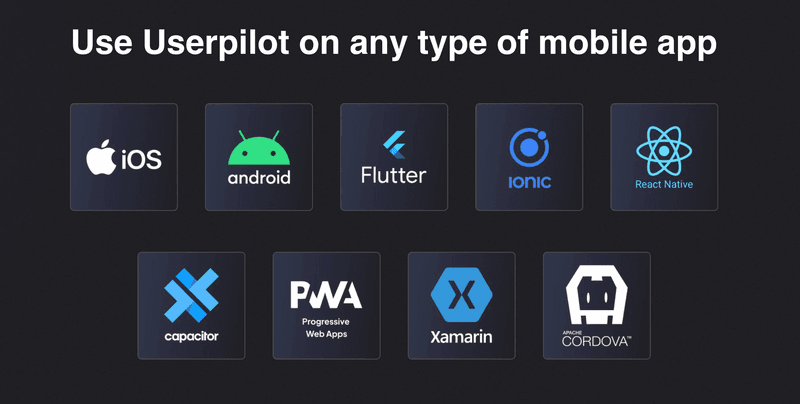
- AI writing assistant: This tool comes in handy when you’re unsure of the best way to get your message across. You can use it to generate content, improve your existing content, or adjust word count as needed.
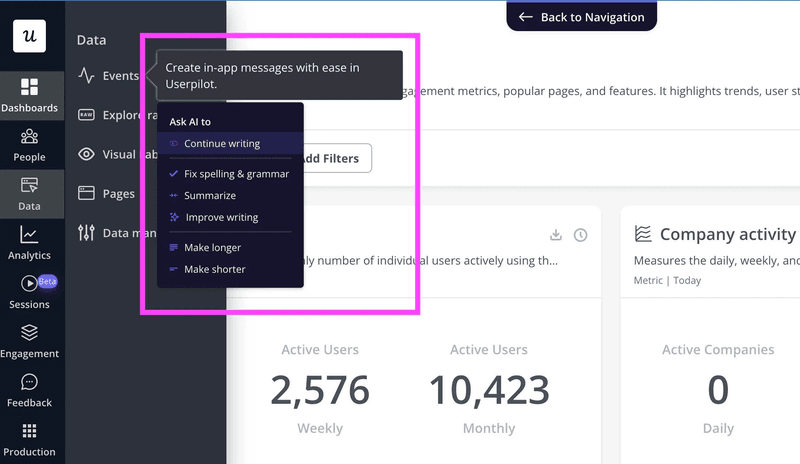
- Contextual UI patterns: Userpilot equips you to build modals, tooltips, in-app banners, and other UI elements for timely user communication. For example, you could trigger a modal (as in Calm’s example above) to offer upgrade discounts right when users hit a gated feature.
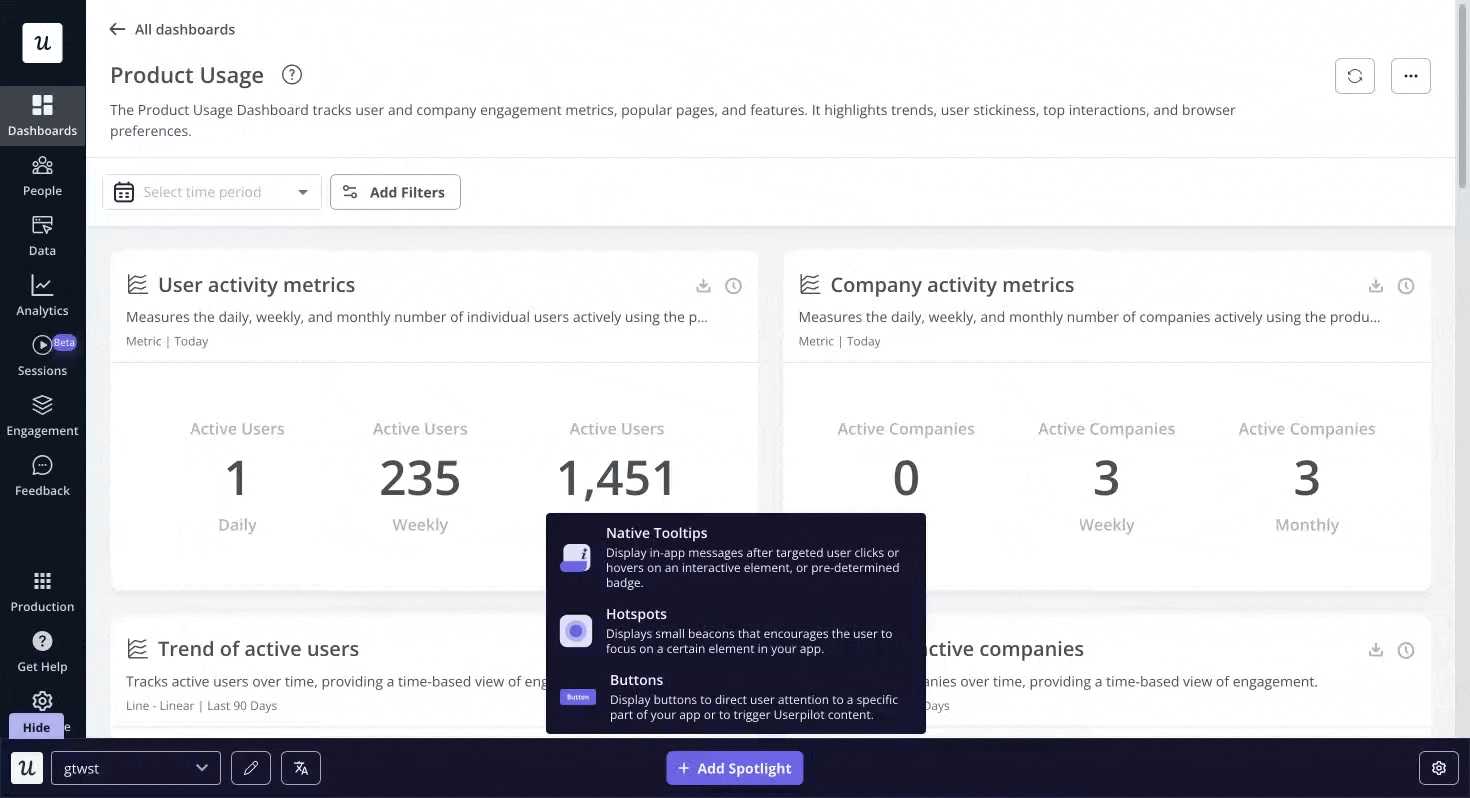
- A/B testing: Compare several variations of your messaging and pricing prompts to see which copy or layout converts best. Userpilot automatically tracks the campaign results, and you can roll out the best version with a simple button click.
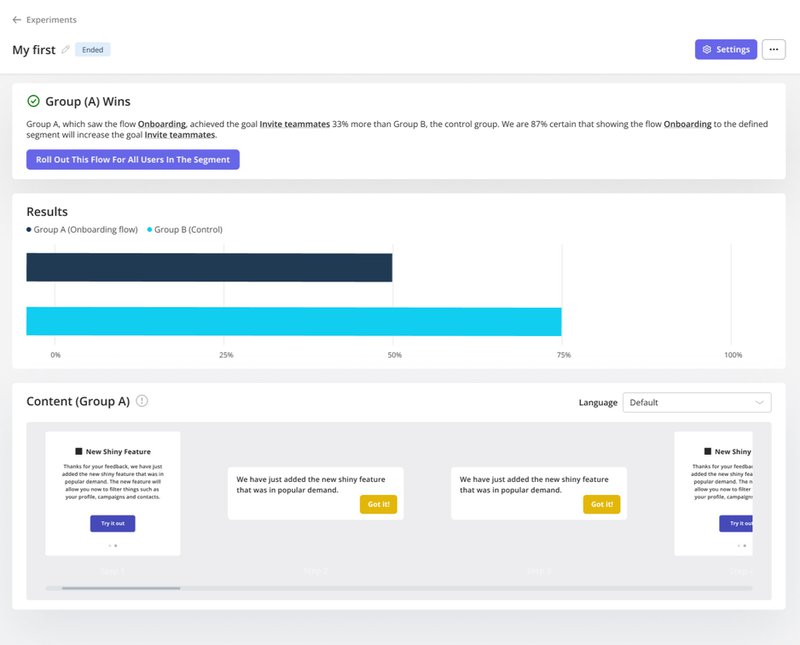
- Content localization: Localize flows for different geographies to increase messaging relevance and drive better revenue. Userpilot currently supports 32 languages, and you can choose between AI-powered localization or having your team do it manually.
7. Combine subscriptions + IAPs for a hybrid model
What it is: Charge a recurring fee for access to premium features or an ad-free experience, while also selling add-ons, upgrades, or exclusive content for users who want more out of your app.
Why it works: Not all users are the same. Some prefer the predictability and consistent value of a subscription, while others prefer the flexibility of one-time purchases for specific needs. A hybrid model accommodates both types of users and helps you maximize revenue.
Example: Headspace, the meditation and mindfulness app, combines its regular subscription plans with in-app purchases for specific courses or single sessions. An example is its virtual mental health coaching service:
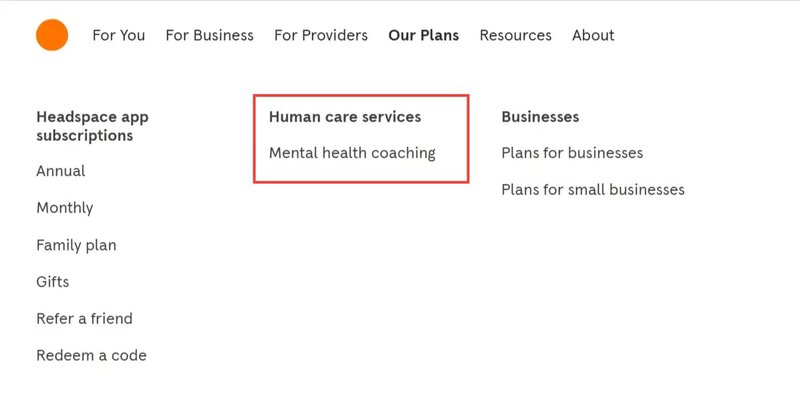
The app costs $12.99/month for regular use, but users can add the coaching service for an extra $99.99/month, regardless of their subscription plan.
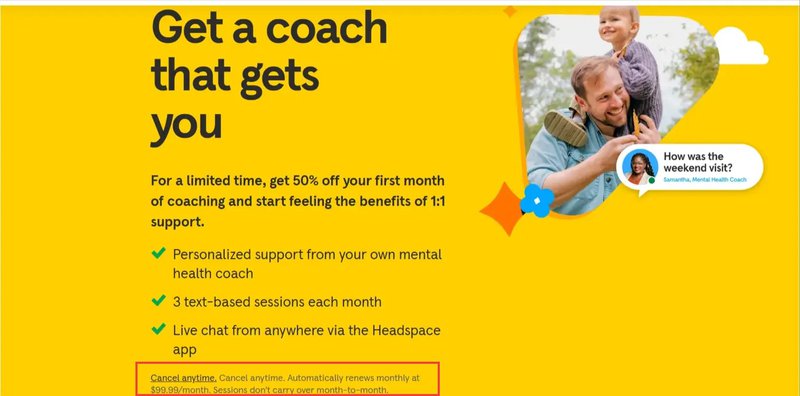
Key considerations: Be careful not to put too much content behind a subscription and IAPs. This can make users feel overcharged and reduce perceived value.
Which app monetization strategy will maximize app revenue for you?
As promised, here’s a table to help you make a smart decision:
| App Type / Context | Best-Fit Model(s) | Why? |
| Casual and Hyper-Casual Games | In-app ads, IAPs, hybrid (Ads + IAPs) | – High user volume and short sessions.
– Ads monetize broadly while IAPs engage core players. |
| Mid/Hardcore Games | Freemium with IAPs, subscriptions, feature gating | – Users invest a significant amount of time in playing mid and hardcore games, so they’re often open to boosting their experience through IAPs, subscriptions, and progression-based feature gating. |
| Productivity and Utility Apps | Subscriptions, feature gating, paid downloads | – Subscriptions work well because these apps tend to enjoy frequent usage.
– Paid downloads and gated features are also effective strategies if the app proves to provide more value than users can get from a free one. |
| Health and Fitness Apps | Subscriptions, freemium with IAPs, hybrid | – The core advantage here is that users are seeking ongoing content.
– Subscriptions keep your monthly MRR healthy, and IAPs allow for flexible, incremental revenue based on user behavior and interest. |
| Finance and Budgeting Apps | Subscriptions, freemium, affiliate marketing | – These users tend to use third-party finance tools. Providing affiliate links to these tools means you’re helping them achieve their goals while generating revenue for your business.
– And if you’ve built a product that solves real finance and budgeting pain points, just ditch the affiliate marketing model and use subscriptions to grow revenue. |
| Ecommerce and Shopping Apps | Affiliate marketing, In-app ads, freemium | – The freemium model allows you to gather as much users as possible.- Highly relevant ads and affiliate links help you monetize the free user’s discovery behavior and generate additional revenue. |
| Education and Learning Apps | Subscriptions, freemium with IAPs, feature gating | – Users download these apps for structured learning. Once your content is well organized and valuable, you can charge them a monthly or annual fee for using your app.
– IAPs or feature gating helps you make more money from upgrades and add-ons. |
| Media and Streaming Apps | Subscriptions, freemium with ads, hybrid | – These content-heavy apps thrive on subscriptions.
– Ads help you monetize free users, while the hybrid approach balances both and ensures you cater to diverse user needs. |
| B2B and SaaS Mobile Apps | Subscriptions, feature gating | – Subscriptions provide premium value and drive user retention.
– Feature gating (or usage-based pricing, depending on your product) helps you grow and adapt to changing user needs. |
| Niche/Specialized Tools | Paid downloads, subscriptions, feature gating | – Premium tools justify upfront – cost.
– Subscriptions or feature gating helps you identify your power users and meet their needs more effectively. |
Your mobile app can—and should—make more money
If you take away just one thing from this article, let it be this: How users respond to your monetization strategy depends entirely on their intent and the value they see in your app.
You’re more likely to succeed with paid downloads, subscriptions, or feature gating if your app solves a real pain point and offers something users can’t easily find elsewhere. Likewise, ad-based monetization only works at scale: you need a large, engaged user base that returns regularly.
Bottom line: Understand your users, track their behavior, and continuously optimize your monetization strategy around what actually drives value for them.
Userpilot can help. From advanced segmentation to user behavior analysis and content personalization, our platform equips you to drive user engagement and increase app revenue. Book a demo to get started today.
FAQ
How can an app generate revenue?
Apps generate income through models like in-app purchases, subscriptions, affiliate partnerships, paid downloads, B2B licensing, and in-app advertising revenue.
Do free apps make money?
Yes! Free apps often make money through ads, in-app purchases, or premium upgrades. Study your target audience and discover areas of opportunity that allow you to make the most revenue.
How much profit does the average app make?
Some apps earn a few hundred dollars a month, while others generate millions. Industry data shows the average revenue for thriving mobile apps is around $5,000/month.
How much money do you make per download on the App Store?
For paid apps, you typically earn 70-85% of the price after Google or Apple’s 15-30% commission. Revenue from free apps comes via ads, IAPs, or upgrades, so your earnings per download depend on user behavior and lifetime value.


